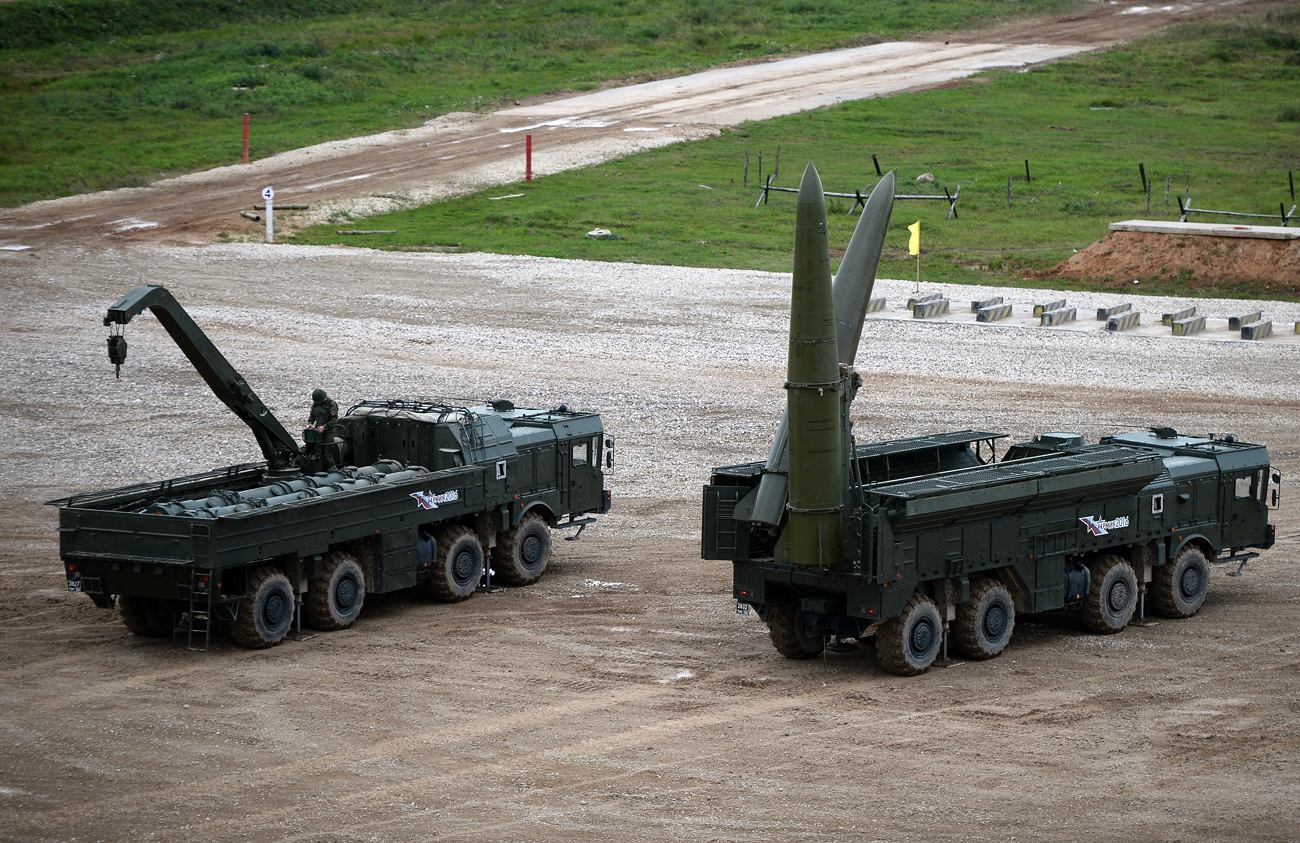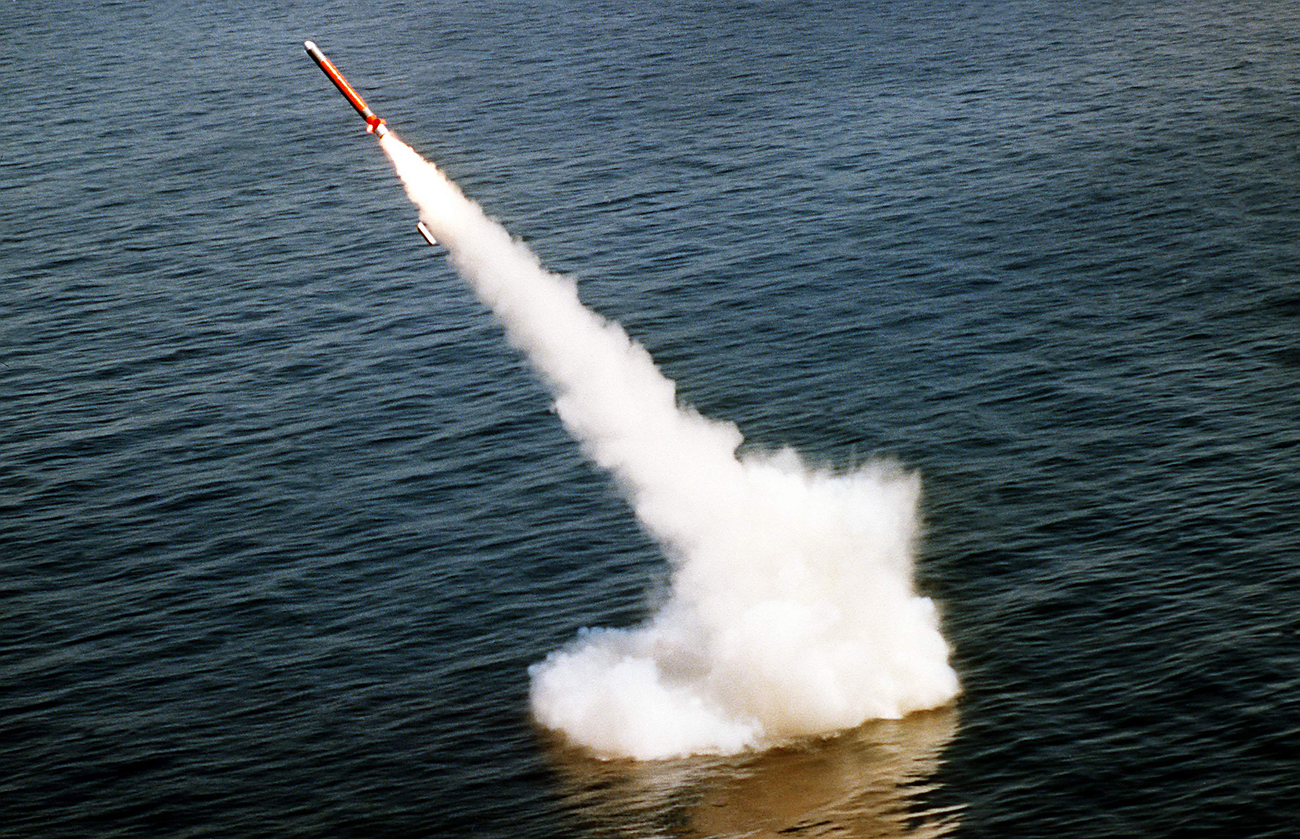Russian Iskander ‘deliberately placed’ under passing U.S. satellite

An Iskander-M missile system (R) during the military machinery show at the Alabino training ground held as part of the international military-technical forum ARMY-2016.
Evgeny Biyatov/RIA NovostiNATO defense ministers are to discuss the situation following reports that Russia has deployed Iskander-M missile systems in its westernmost Kaliningrad Region, RIA Novosti news agency has reported (in Russian), citing a diplomatic source in Brussels. According to the source, at their meeting in Brussels on Oct. 26-27, the ministers will also discuss Russia’s actions in Syria.
On Oct. 7, The Guardian newspaper, citing Estonian officials, reported that Russia was shipping short-range ballistic missile systems to the border with Poland and Lithuania.
The Russian Defense Ministry replied that Russia had never sought to conceal the transportation of the missile systems aboard the Ambal dry cargo vessel.
“Before being loaded onboard the Ambal, one Iskander was deliberately placed under a passing U.S. reconnaissance satellite,” said the ministry’s official spokesman, Maj-Gen. Igor Konashenkov.
According to him, this was done to “clarify the operational parameters of the American satellite.” He continued: “We did not have to wait long – in ‘their fervor to expose,’ our American partners themselves confirmed everything to us.”
Konashenkov went on to stress that the Iskander is a mobile missile system. All year round, Russian Missile Troops units work on improving their march training, covering considerable distances across the territory of the Russian Federation – by air, by sea and under their own power – as part of the combat training plan.
Iskanders as a response to ABM in Eastern Europe
The Missile Troops and Artillery Staff began considering the possibility of deploying Iskander systems to Kaliningrad Region for the first time back in 2008, after the West decided to deploy missile defense systems in Poland and the Czech Republic, said a senior source from the staff.
According to him, already then Russia was considering the option of deploying an Islander missile brigade to the Kaliningrad Region either by sea or by land.
“In the course of the recent redeployment, attention was paid to the tactical component as well as to all the issues of rear services support.
“It is important for us to get answers to the following questions: How, within what timeframe and how well are the missile troops capable of performing set combat tasks? In this case, the deployment of a missile brigade is envisaged at what is practically Russia’s westernmost border to make maximum use of the effective range of the Iskander tactical ballistic missile system,” the source said.
He went on to add that at present only two missile brigades remain not yet provided with Iskander systems.
The move is an absolutely adequate step in response to the deployment of air and missile systems in Poland, said former chief of staff of the Leningrad Military District Col-Gen Sergei Kizyun.
“As regards the characteristics of the Kaliningrad Region, there is enough space for a missile brigade to deploy there and to maneuver, if necessary. In addition, the region has quite a lot of forests where one can easily hide from the reconnaissance equipment of a potential enemy,” said Kizyun.
“Also, this Russian exclave bulges out into the relatively small Baltic Sea and many firing tasks in the region can be performed without even involving the fleet, i.e. with weapons on the shore,” he said.
Unpredictable missile trajectory
The Iskander-M short-range ballistic missile system, designed by the research and industrial corporation Machine-Building Design Bureau, came into service in 2006.
According to its manufacturer, the system has a range of 500 km (310 miles), or in the exported version, 280 km (175 miles). Iskander-M aeroballistic missiles are guided throughout their flight, which makes their trajectory unpredictable and makes it more difficult to intercept them.
In addition, the Iskander can employ high-precision R-500 cruise missiles.
First published in Russian by Gazeta.ru
Read more: Russia: We will shoot down U.S. jets in Syria that threaten our servicemen>>>
Subscribe to get the hand picked best stories every week
All rights reserved by Rossiyskaya Gazeta.
Subscribe
to our newsletter!
Get the week's best stories straight to your inbox

